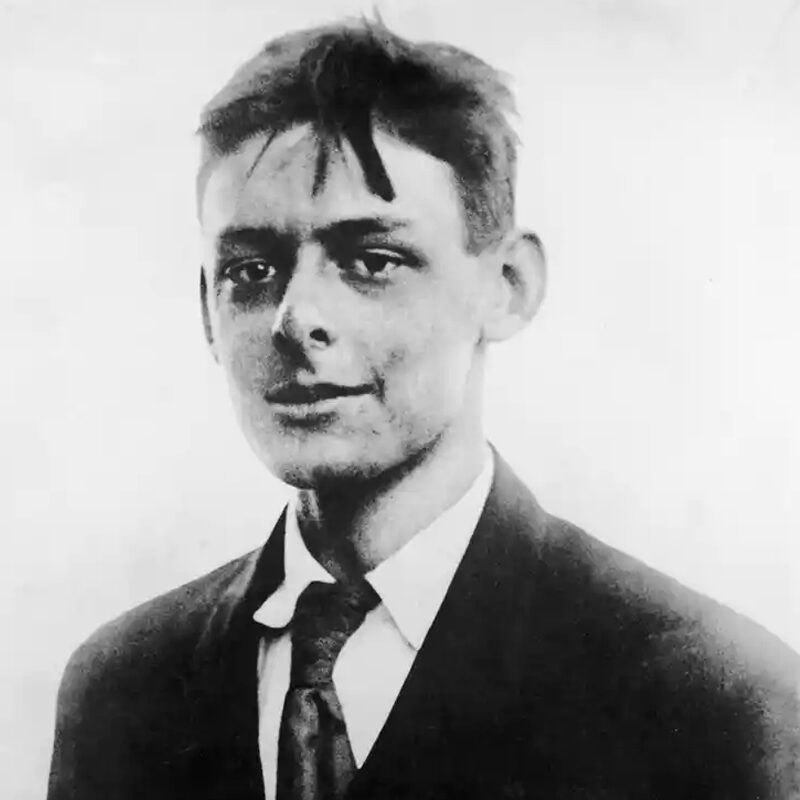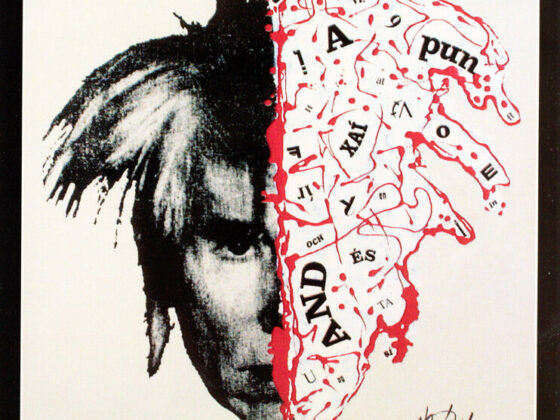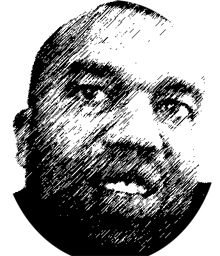“Modernist art is perhaps the first consciously to absorb the principle for which Marshall McLuhan found words a generation later, that ‘the medium is the message.’ Modernist artists – in the novel, poetry, the drama, music, the dance, architecture and elsewhere – understand that, to articulate their sense of the differentness of modern experience and of being in the modern world, they must change their medium, as well as, and as much as – if not more than – what the medium ‘says’.”
In light of this remark I discuss The Waste Land and several other poems by Eliot.
—
On publication of his first poem T.S Eliot was regarded as ‘a disruptive progressive iconoclast’ (Jones 9). In 1915, at the insistence of Ezra Pound, Poetry Magazine published ‘The Love Song of J. Alfred Prufrock’; what had been evident to Mr. Pound was now evident to all who had more than a passing interest in poetry in the English language, something new had arrived, Modern Poetry had a voice. The now immortal image from ‘Prufrock’ of the “patient etherized upon a table” ironically revived the intellectual climate of contemporary poetry and heralded the arrival of a new perspective, the urban landscape, the poetry of the city. This is precisely what Eliot had intended. He regarded himself an active revolutionary, a rebel, and his purpose “was to direct attention towards the particular sources of poetic power whose neglect had led, he felt, to a progressive devitalization of poetic art”. (Drew 36) Drawing from all literature that preceded his place in history Eliot consciously devoted himself, both philosophically and creatively, to the development of a new poetic voice. His aim was to modernize himself and his chosen medium, poetry. With ‘The Wasteland’ (1922) he succeeded, giving the reader not only descriptions that were startlingly new, “That corpse you planted last year in your garden, / ‘Has it begun to sprout?’” (Eliot 53. 71-72) but also metaphors and allusions which are as multi-layered as they are striking. He also offers new interpretations of the mythic man as opposed to the real man, struggling for identity, meaning and purpose in the post war, modern, industrialized world:
He, the young man, carbuncular, arrives,
A small house agent’s clerk, with one bold stare,
One of the low on whom assurance sits
As a silk hat on a Bradford Millionaire. (60. 231-234)
Eliot gave us a rich, chaotic tapestry of verse that “…juxtaposes the remote and the familiar, the traditional and the contemporary”.(Headings 17) By combining his intense, studied interest in the medium of poetry with his natural talent for the musicality of languages, T.S. Eliot produced some of the greatest poems ever written in English and in the process, permanently changed the medium of poetry itself.
The Princeton Encyclopedia of Poetry and Poetics summarizes T.S Eliot’s position on poetry with this brief, humorous passage: A poet’s task during creation is to give expression to some extremely complex state of mind that has been forming itself unconsciously out of his stored experiences and is now beginning to agitate him obscurely (Preminger 515). When first embarking upon a study of ‘The Wasteland’ (1922), this may seem an apt conclusion. The reader is confronted with a strange metaphysical landscape that although steeped in obscurity somehow seems familiar, the remnants of both objects and ideas, memories and desires, characters from the past and imagined in the future hover on the peripheries, where “…you cannot say or guess, for you know only / A heap of broken images…”. Eliot literally evokes a wasteland, haunted by the ghost(s) of what once was, the reader left reeling about the wreckage unable to find shelter, death looming in the shadows. Sometimes the reader is given a glance of something recognizable but then it slips away, like someone flashing around a torch in a cave. This jigsaw, shattered mirror technique, coupled with dark fragmented reflections and glimpses of what are perhaps the poets own private rituals, builds an almost unnerving image in the mind of the reader. However, and despite this trepidation, further analysis of the text shows Preminger’s summary should not be considered the final prognosis of ‘The Wasteland’. Once you tune in to the poem, when you discover all the secret rhymes, “…the sound of horns and motors, which shall bring/Sweeney to Mrs. Porter in the spring” you learn to observe without judgment and to appreciate the text despite personal preconceptions of what a poem should ‘be’ or ‘do’.
Another innovative technique of Eliot’s, evident early in his career with ‘The Love Song of J. Alfred Prufrock’ (1915) is the weariness apparent in the tone of the narrators voice, a blasé, world-weary guide through the density and the vastness of the allusions in the text. In ‘The Wasteland’ (1922) this technique lulls the reader into a semi-detached, almost hypnotic state, allowing Eliot to present shocking imagery while suppressing his audience’s expected inclination to moral outrage. This dead-pan innovation also serves to hold the explosion, to understate the immensity of what you are reading, you find yourself standing there, without drama, numb among the junk. This weariness is also combined with an ingenious use of the inherent musicality of the English language, vowels and consonants resounding off one another with an almost preternatural clarity. Repeat out loud this quotation as an example:
The nymphs are departed.
And their friends, the loitering heirs of City directors;
Departed, have left no addresses. (Eliot 58)
The music of Eliot’s language was, to early 20th century ears, a new music – disjointed, like the first uncertain notes of a broken opera, struggling to comprehend an atrocity. At once hopeful and fearful of the future, it beat a new drum and heralded the arrival of the new modern self-conscious human, one who did not merely discard and disregard the past but one who had arrived in ‘the now’ dragging behind them all that they had learned, all that was useful, to forge a new future from the bricks and dust of the old empires.
In ‘The Wasteland’ Eliot also employs an innovative use of parataxis (the placing together of sentences, clauses, or phrases without a conjunctive word or words) as demonstrated by the line “O the moon shone bright on Mrs. Porter / And on her daughter / They wash their feet in soda water…” Ezra Pound, the editor of the original manuscript of ‘The Wasteland’, himself renowned internationally for his innovations in poetry, was so impressed he remarked “About enough, Eliot’s poem, to make the rest of us shut up shop…” (Eliot, Valerie xxii)
Pound, in turn, has left his mark on ‘The Wasteland’, being largely responsible for the format of the poem as we know it today. In fact the fragmentary, ‘blown apart’ presentation of the poem is a result of the redactions of Pound, and Eliot (ever the innovator) choosing to leave blank spaces where the edits occurred, rather than reformatting the poem’s structure. An example can be seen where, in the unedited manuscript, the lines appeared as:
Unreal City, I have seen and see Under the brown fog of your winter noon…
(Eliot,V 43. Lines 93-94)
In the published version, after Pound’s edit, Eliot chose not to reduce the poem:
Unreal City Under the brown fog of a winter noon…
(Eliot, T.S 59. Lines 207-208)
Another, more obvious, example can be seen where the original manuscript read:
At the violet hour, the hour when eyes and back and hand Turn upward from the desk, the human engine waits— Like a taxi throbbing waiting at a stand—
(Eliot, V 43. Lines 121-123)
While the published version, after Pound’s editorial interjections, read:
At the violet hour, the hour when eyes and back Turn upward from the desk, when the human engine waits Like a taxi throbbing waiting,
(Eliot, T.S. 59. Lines 207-208)
This results in the ‘cut short rhyme’ effect and also the fragmentary presentation, both very effective in portraying the ‘wasteland’ Eliot intended.
The balance and rhythmic flow, the measured inflections and modulation of the vowels and consonants, and the measured beat of the voice in Eliot’s verse was self consciously revolutionary. In a lecture that Eliot gave in 1950 he spoke directly of two of his major poetic influences, Jules Laforgue and Charles Baudelaire. From Laforgue, “[Eliot] learned that his own speech idioms had poetic possibilities, and from Baudelaire, that his urban experience could be material for poetry…[and that] juxtaposing the realistic and the fantastic could produce striking effects”. (Headings 20) ‘Prufrock’ (1915) – written when Eliot was only twenty three – presents us with a line that critic Piers Gray called “an astonishing achievement’s astonishing achievement” (Gray 83), he gives us a glimpse of his gifts of cadence and the influence of Baudelaire with abrupt binary contrasts:
There will be time, there will be time to prepare a face to meet the faces that you meet; There will be time to murder and create, And time for all the works and days of hands That lift and drop a question on your plate.
(The Love Song of J. Alfred Prufrock, 1915)
These techniques were refined and his gifts developed when seven years later he penned these lines in “The Wasteland”; hidden in the pleasant rhythm and disguised with every day sounding words is what appears to be a scene depicting a sexual assault, or at the very least a sterile indifferent copulation:
The time is now propitious, as he guesses, The meal is ended, she is bored and tired, Endeavours to engage her in caresses Which still are unreproved, if undesired. Flushed and decided he assaults at once;
Exploring hands encounter no defence. (235-240)
All of these important innovations in Eliot’s poetry are as consciously realized as the seemingly loose but highly designed tapestry of literary and philosophical allusions and references he invents or modifies. Eliot himself said that “the great poet is the man who ‘out of intense and personal experience is able to express a general truth : retaining all the particularity of his experience to make it a general symbol’” (Drew 91). Eliot’s intention was to portray his time, a world in literal and spiritual ruin, to cultivate his innate skills of observation and abilities with language to metaphorically shake the reader awake. To effectively enunciate this time and place he effectively “trained himself and modernized himself, on his own!” (Stock 166) as Ezra Pound commented after their first meeting. Through the medium of poetry Eliot built a new temple in a moral Sahara, in this ‘wasteland’ of compromised ethics and spiritual barrenness he succeeded in growing an intellectual flower. Eliot knew what he wanted to say and he conceived a very effective way to say it, his aim “to achieve comprehensiveness through allusion, meaning through dislocation” (Gray 225) and his conscious effort to get “as much as possible of the whole weight of the history of the language behind his words” (225) was, as history has demonstrated, a very successful aim indeed. Eliot took the average man from his time, placed them among the ruins, gently awoke them from their collective fugue, all the while reminding them that what they had lived through was epic, worthy of myth. His equally epic poem, ‘The Wasteland’ portrays his vision of the modern man, getting up from the catastrophe, dusting off his coat, taking account of what he has learned, what he has inherited, and continuing on, as the poem concludes, “These fragments I have shored against my ruins…”
—
© Brentley Frazer
Works Cited
Drew, Elizabeth. T.S. Eliot, The Design of his Poetry. Eyre and Spottiswoode, London, 1950
Eliot, T.S The Love Song of J. Alfred Prufrock 1917. Selected Poems. Faber and Faber 1961
Eliot, T.S The Wasteland 1922. Selected Poems. Faber and Faber 1961
Eliot, Valerie, Editor. T.S. Eliot, The Wasteland: A facsimile and transcript of the original draft including the annotations of Ezra Pound. Faber and Faber. London 1971.
Gray, Piers. T.S Eliot’s Intellectual and Poetic development 1909-1922. The Harvester Press, Sussex, 1982.
Headings, Philip. R. Bowman, Sylvia E. Editor. T.S Eliot. Twayne Publishers/University of Illinois, 1964.
Jones, Genesius. Approach to the Purpose; A Study of the Poetry of T.S Eliot. Hodder and Stoughton, London, 1964.
Preminger, Alex. Princeton Encyclopedia of Poetry and Poetics. Princeton University Press, New Jersey 1974.
Stock, Noel. The Life of Ezra Pound. Pantheon Books/Random House, New York 1970
Works Consulted
Ackroyd, Peter. T.S. Eliot. Hamish Hamilton, London 1984.
Eliot, T.S. Ezra Pound: His Metric And Poetry. Kessinger Publishing, USA 2004.
Gordon, Lyndall T.S. Eliot: An Imperfect Life. W. W. Norton & Company 1999.
Menand, Louis. Discovering Modernism: T. S. Eliot and His Context. Oxford University Press, USA; 2 edition 2007.
Stone Dale, Alzina. T.S. Eliot: The Philosopher Poet. Backinprint.com 2004.
Vocal recording of T.S. Eliot reading The Love Song of J. Alfred Prufrock 1917 – http://www.youtube.com/watch?v=NhiCMAG658M
Vocal recording of T.S. Eliot reading The Wasteland 1922 – http://www.youtube.com/watch?v=3tqK5zQlCDQ&feature=related









